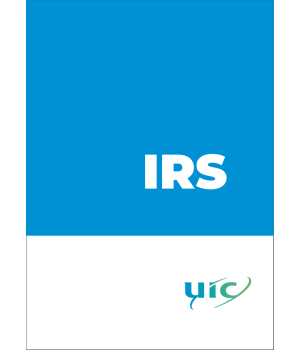
Track noise measurement guidelines - A methodology to measure and compare noise emissions during train pass-bys
The International Union of Railways (UIC), through its Noise and Vibration Sector (NV), works with its members to better understand noise-generating mechanisms in order to make tangible progress towards a being a better neighbour. The vision of the UIC NV Sector is to provide a global dialogue to integrate sustainability into railway operations and maintenance with a common goal to better manage noise emissions.
The UIC Low-Cost Noise Control by Optimised Rail Pad (LOWNOISEPAD) project, supported by the UIC NV sector, has brought together the railway community in an effort to find an optimal rail pad to help tackle noise issues across 12 different European railway networks. Within the framework of the project, measurement guidelines for railway noise were developed, which include advice on the measurement of noise-related track characteristics such as pass-by noise emissions, rail vibrations and decay rate on tracks (TDR). The drafted guidelines can be used for measuring the influence on noise with the change of track components. The IRS brings together expertise from the UIC members participating in the LOWNOISEPAD project, during which the guidelines were written and approved.
The guidelines are designed for infrastructure managers (IMs) and consultants carrying out measurements along the track. The guidelines ensure that noise measurements are undertaken so that they give comparable and repeatable results. The approval of the IRS was completed within the framework of the UIC Sustainability Platform and with the support of the UIC NV sector members. The necessary information was shared with other relevant UIC working groups under the Rail system department.
Through the IRS, UIC aims to provide its members with several advantages, as outlined below:
- The results are not only based on noise emissions, but rail dynamic responses (e.g., rail displacements and accelerations) and decay rate on tracks are also measured at the same time, which enables the noise measurements to be validated.
- By following this methodology, infrastructure managers can more easily use the software tool created by the LOWNOISEPAD project to estimate the effect of new optimised rail pads on noise based on TDR measurements.
- New data measured following these guidelines can be used to improve the software tool.
It integrates in full or in part the following UIC leaflets:
- none
It aims to complement the following standards:
1. EN 15461:2008+A1-2010: Railway applications - Noise emission - Characterisation of the dynamic properties of track sections for pass by noise measurements
2. EN 15610:2019: Railway applications - Acoustics - Rail and wheel roughness measurement related to noise generation
3. ISO 3095:2013: Acoustics - Railway applications - Measurement of noise emitted by railbound vehicles
| Author | UIC |
| ISBN | 978-2-7461-3273-3 |
| Pages | 36 |
Data sheet
- Language
- English
- Format
- Downloadable
- Edition
- Ed. no.1
- Edition date
- 01/06/2023
- Publication date
- 08/06/2023
- Page number
- 36
- Theme
- Environment Environnement Standardisation Standardisation Sustainable development Développement durable
- sku
- 75717/E/1-PDF
- Reference
- 75717
 Cookie preferences
Cookie preferences

